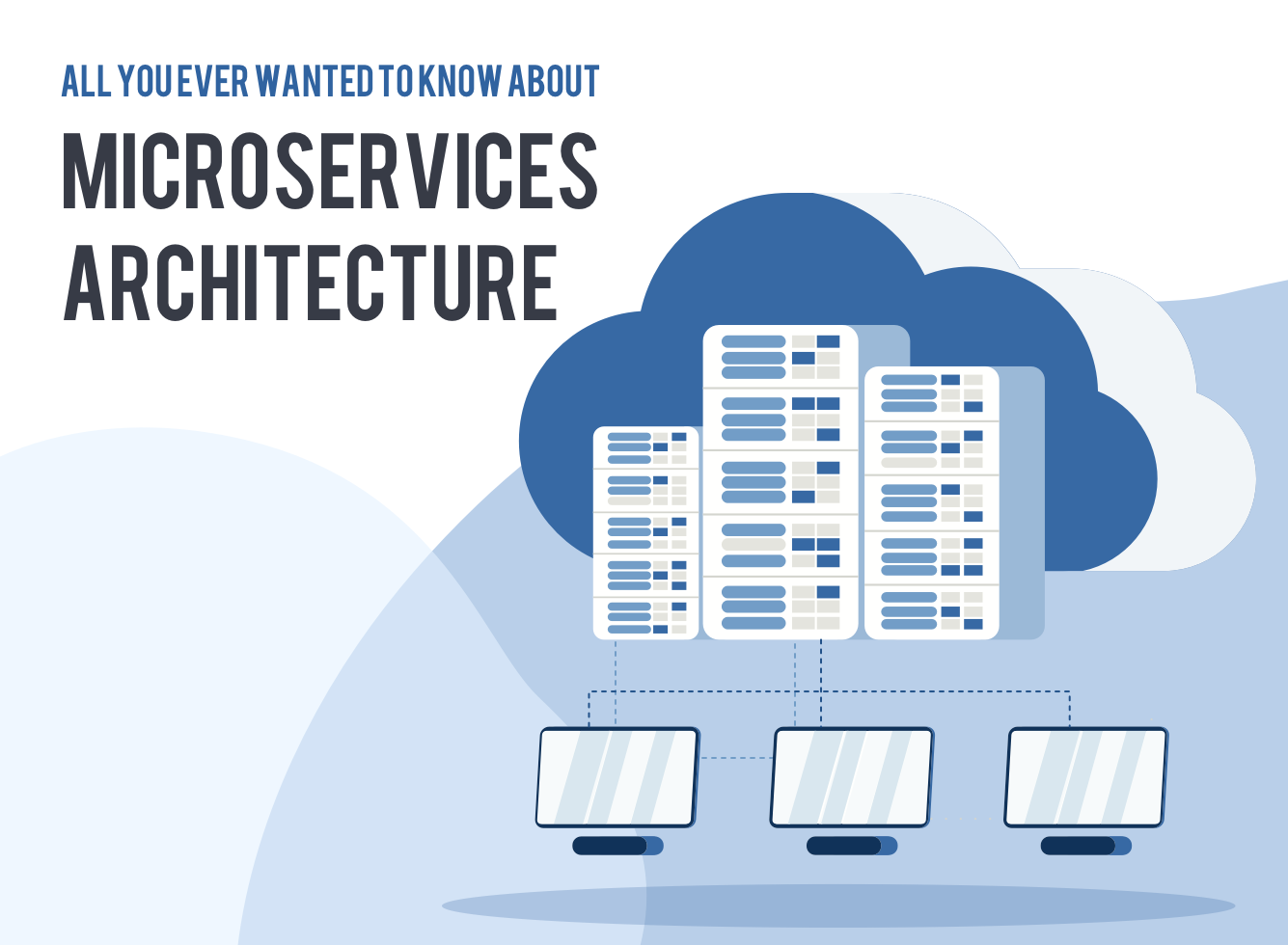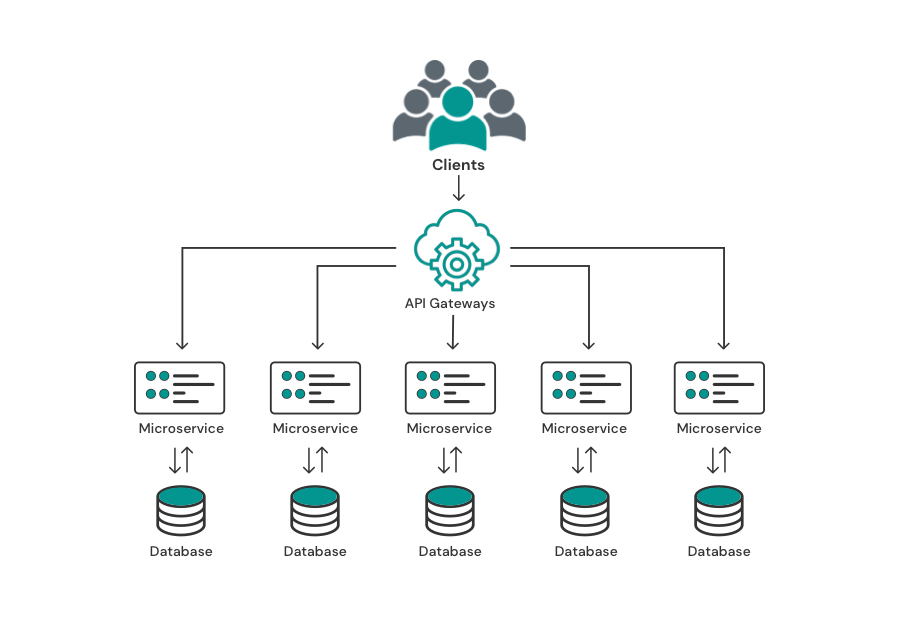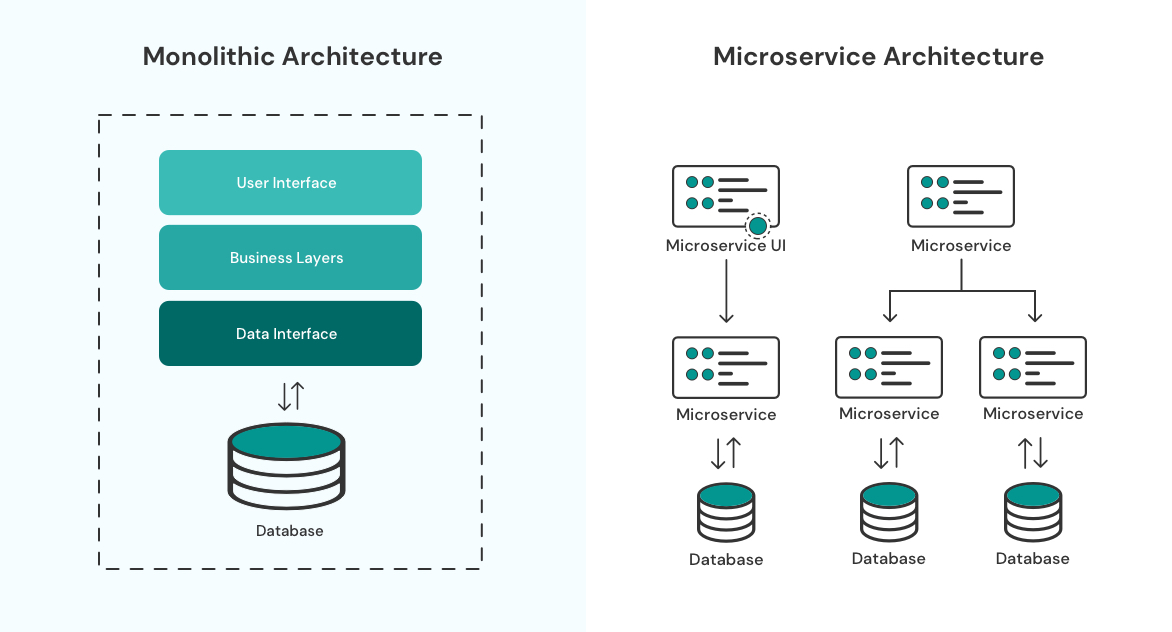Microservices Explained – All You Ever Wanted to Know About Microservices Architecture

Fast forward to 2011, and the term “microservices” started to gain traction amongst a group of software architects holding a workshop near Venice. In 2014, software developer and author Sam Newman published a book titled “Building Microservices: Designing Fine-Grained Systems”, which further popularized the concept in the world of software development.
Microservices are now ubiquitous in complex web applications and are considered by many to be a best practice for software development. In this article, we’ll take a look at what microservices are, how they differ from other software architectures and some of the benefits associated with the development of microservices.
What is a Microservice?
A microservice is a small, independent service that performs a specific task. When used in the context of software architecture, a microservice is a loosely coupled service that can be deployed and scaled independently. Microservices are often compared to monolithic architecture, in which an application is built as a single, large unit.
Martin Fowler, author and developer, describes microservices architecture as “an approach to developing a single application as a suite of small services, each running in its own process and communicating with lightweight mechanisms”. Microservices have a few other defining features:
- They are organized around business capabilities.
- They are independently deployable.
- They can be written in different programming languages and use different data stores.
- Usually, they are small, with most services being less than 1,000 lines of code.
DevOps teams embraced microservices as a way to increase the speed and agility of software development. By breaking down an application into small, independent services, teams can deploy new features and updates much faster than with a monolithic architecture.
How Microservices Work
Microservices architecture is based on the principle of separation of concerns. This means that each microservice should have a single responsibility and be self-contained. This allows each service to be developed, deployed, and scaled independently from the others.

These microservices are built on the concept of “dumb pipes” and “smart endpoints”. This means each microservice should expose a simple interface that can be called by other services. The microservice should then process the request and return the response. This allows each microservice to be developed independently and makes it easier to scale and deploy services. Since microservices application development is a concept rather than a specific technology, there is no one right way to build microservices. However, there are a few common patterns and technologies that are often used as shown below.
Service discovery: Microservices can find and communicate with each other using service discovery. This allows services to be registered and located dynamically.
API gateway: An API gateway is a single point of entry for all requests to a microservices architecture. The API gateway routes send a request to the appropriate service and can also perform tasks such as authentication and rate-limiting.
Event sourcing: Event sourcing is a pattern in which events are used to store and retrieve data. This allows for a complete history of all events to be stored, which can be used to recreate the state of an application at any given point in time.
The Advantages of Microservices Architecture
Microservices architecture has quickly become the preferred way to build modern applications, especially for DevOps teams that need to move fast. This is thanks to a number of advantages that microservices offer over other architectures as highlighted below.
Reduced Development Time
One of the biggest advantages of microservices development is that it reduces the amount of time it takes to produce a working application. Each microservice can be developed and deployed independently from the others, speeding up the development lifecycle.
This also means teams can work on different parts of the application at the same time and deploy new features quickly. DevOps teams can use continuous delivery and deployment to automatically deploy new code to production, which further reduces the development time.
Increased Scalability
If you have a large monolithic application, it can be difficult to scale. Making adjustments to the codebase can be risky, and you might need to deploy a new version of the application to make changes. With microservices, each service can be scaled independently from the others. This means you can scale the services that are receiving the most traffic without affecting the other services.
Lower Downtime
If one part of an application built on monolithic principles goes down, the entire application will go down with it. With microservices, each service is independent of the others. This means if one service has an issue, the other services will continue to run. It results in lower downtime for the application as a whole. Updates and upgrades can also be performed without taking the entire application offline.
Development Lifecycle
A key benefit of microservices architecture is that it enables a true DevOps culture of continuous delivery. This is because each service can be developed, deployed, and scaled independently. Testing and development can be done on a service-by-service basis, which reduces the risk of new code integration. It also allows for faster deployments and more frequent releases.
Improved Fault Isolation
Code dependency in software development can cause vulnerabilities in monolithic applications. And when an issue arises, it can be difficult to pinpoint the root cause if the codebase is large and complex. In a microservices-based application, if there is an issue with one service, it won’t bring down the entire application. This makes it easier to identify faults and resolve them with less downtime.
How to Start Building Microservices Applications
If you’re looking to get started with microservices architecture development, there are a few things you need to keep in mind. The first is that microservices are not a silver bullet. They come with their own set of challenges, which need to be addressed. The second is that microservices are not a one-size-fits-all solution. They need to be tailored to the specific needs of your application. That being said, here are a few key steps to get started with microservices architecture development.
Identify Business Capabilities
The first step is to identify the business capabilities of your application. This will help you determine which services need to be built. For example, if you’re building an eCommerce application, you’ll need a service for product catalogues, a service for orders and payments, a service for customer accounts, and so on.
Keep in mind that each service should be small and focused on a single business capability. This will make it easier to develop, deploy, and scale each service independently.
Build & Design Each Service
Once you’ve identified the business capabilities of your application, you can start building and designing the individual microservices. Since the goal of a microservices architecture is to deploy the services independently, it’s important to design them in such a way that any complexity is hidden, and they can communicate with each other using simple APIs. This will ensure and maintain flexibility, scalability, and resilience.
Design the Individual Services
When designing each service, you need to keep a few things in mind. The first is that each service should be self-contained. This means it should have its own database and should not depend on other services. Each service should also be stateless, meaning it shouldn’t store any data locally. In addition to this, each service should be designed to be scalable. This means it should be able to handle an increase in traffic without affecting the performance of the other services.
Decentralize the Development
Many teams find that employing an internal open-source model of microservices development can yield the best results. This means instead of creating siloed teams of developers each working separately on their own service, developers can submit changes to the code of any service feature as and when they need to. It requires a system that is well-documented so that developers can easily pick up where another developer has left off.
Application Deployment
Once you’ve designed and built your services, you need to deploy and manage them. Each service should be deployed independently, using a continuous delivery pipeline. This will help ensure that new code is deployed quickly and safely. You also need to use a microservices orchestration tool, such as Kubernetes, to manage the different services. It will help you automate the deployment, scaling, and management of your services.
Monitoring & Logging
Since each service is independent of the others, the microservices need to be monitored and logged in order to identify issues quickly. To do this, you need to use a microservices monitoring tool, such as Prometheus, to collect metrics from each service. This will help you identify issues quickly as they occur. You also need to use a microservices logging tool, such as the ELK stack, to collect and centralize the logs from each service. If debugging is necessary, it will make things much easier.
How Does Microservices Compare to Other Software Architecture?
Microservices are a relatively new way of building software. Before the rise of microservices, most applications were built using a monolithic software architecture. Both have their pros and cons, which are worth considering before deciding on the right one for your application.
We compare some of the key differences between microservices architecture and other software architectures below.
Monolithic vs Microservices Architecture
A monolithic architecture is one in which all the components of an application are built as a single unit. This means all the code for an application is stored in a single codebase. Monolithic software applications consist of a user interface, a business logic layer, and a data storage layer. All of these components are tightly coupled, which means changes to one component can affect the other components.

While microservices confer many advantages, there are still some situations where a monolithic architecture may be a better choice. For example:
You want to build a simple application: If you’re building a simple application with few dependencies, a monolithic architecture may be the best choice. You can quickly build and deploy a monolithic application without having to worry about managing multiple services.
Your application doesn’t need to be highly scalable: Microservices are great for applications that may need to scale quickly. If this doesn’t seem likely to be the case for your application, a monolithic architecture may be the simpler choice.
Your team is small: While microservices have many advantages, they can also be quite complex to manage. If your team is small and you want to avoid this complexity, a monolithic architecture may be the best choice.
You don’t have experience with microservices: If your team doesn’t have experience with microservices and you want to avoid the learning curve, then it may be best to stick to what they know until they have the necessary skill set.
Microservices vs API
There has been some confusion about the relationship between microservices and APIs and some people have mistakenly conflated the two concepts. It’s important to understand that microservices and APIs are not the same things.
An Application Programming Interface (API) is a set of rules and protocols that allow software components to communicate with each other. An API can be used to access data or functionality from another application. Let’s say you want to build a weather app that displays the current weather conditions for a user’s location. To do this, you would use an API to access the data from a weather service. The API is not an independent application, but rather a way for the two applications to communicate with each other. A microservice is a self-contained unit of software that can be deployed independently. In fact, in an application built using microservices architecture, each service will likely have its own API.
Big Names that Have Deployed Microservices Architecture
You can’t tell from the outside if an application is built using microservices or monolithic architecture, but you likely use applications built using microservices every day. As software applications increase in complexity and functionality, more and more developers are turning to microservices. When you have millions of users relying on your application, the last thing you want is for the entire solution to come crashing down because of a single code change.
Netflix
Some of the most famously successful applications have now made the switch to a microservices architecture. Netflix was one of the first big names to do so back in 2009. Before microservices were even a “thing”, Netflix decided to start migrating their application from traditional monolithic architecture to a more distributed microservices architecture. Their motivation was twofold:
To improve the scalability of their application. As Netflix’s user base grew, they found that its monolithic architecture wasn’t able to scale quickly enough to meet demand.
To improve their ability to deliver new features and updates. With a monolithic application, any change to the codebase could potentially break the entire application. This made it difficult and risky to deploy new features or updates.
With millions of subscribers, Netflix was faced with the task of handling enormous amounts of user data. During their switch to microservices, they also migrated to a cloud-based computing model, with help from Amazon Web Services. AWS supplied them with the necessary storage, compute power, and networking resources to support their massive user base. Today, Netflix has over a thousand microservices, supporting everything from user authentication to content delivery.
Amazon
Another big name that made the move to microservices is Amazon. Starting as a small online bookstore, Amazon has now become one of the largest retailers in the world. To keep pace with their rapid growth, they had to find a way to restructure their application to support their ever-expanding user base and product catalogue. They began the process of decoupling their monolithic application into smaller, independent services back in 2002. Back then, Service-Oriented Architecture (SOA) was growing in popularity, and Amazon’s approach was quite similar to what we now know as microservices.
Over the years, they eventually migrated to a microservices architecture, with each service running in its own process and communicating with other services via APIs. If they had not made this decision, it’s unlikely they would be able to support the scale at which they operate today.
Uber
Like many startups, ride-sharing giant Uber started small, with a monolithic application that supported its core functionality — connecting riders with drivers. But as they rapidly expanded into new markets and added new features, they soon realized that their monolithic application was not going to be able to support their growth.
Inspired by giants like Netflix and Amazon, Uber made the switch to microservices in 2014, and haven’t looked back since. Their application now consists of over 2200 essential microservices, supporting over 93 million active users worldwide.
Microservices — A Solution to Complexity
Microservices development has seen a meteoric rise in popularity in recent years, and it’s not hard to see why. With the ever-increasing complexity of software applications, microservices offer a much-needed solution. They allow developers to build applications that support rapid growth and change, without the fear of breaking the entire application.
Often, microservices are deployed in a cloud-based environment, which further enhances their ability to scale quickly and efficiently. Complex apps can be built faster and cheaper using microservices architecture, making them a very attractive option for startups and enterprises alike.
If you’re considering developing a scalable, cloud-based application, microservices design should definitely be on your radar. Contact Vsourz if you would like us to help you design and develop a microservices-based application. Our team of experts will be more than happy to speak in more detail about your project.






